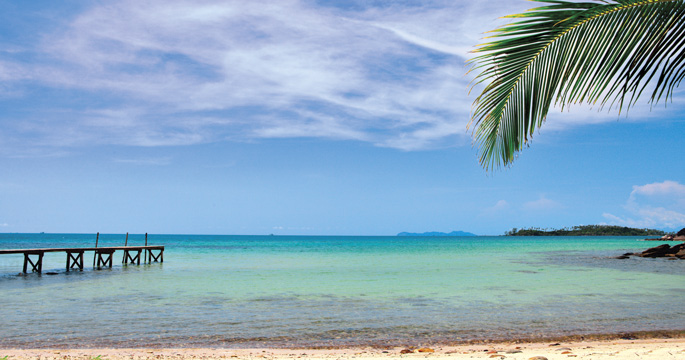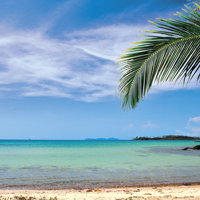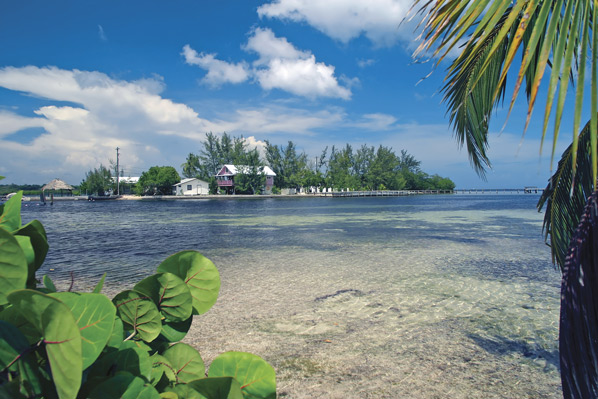In the Caribbean waters just off the Honduran coast lies the start of the world’s second-longest barrier reef. Sitting atop the outer edge of this reef is a collection of tropical islands ringed by coral gardens that teem with fish life. Scuba divers have long known about these underwater marvels and consider the Honduran Bay Islands to be one of the prime diving destinations in the hemisphere. The deeper edges of the island drop-offs may be reserved for divers, but snorkelers aren’t slighted either. Many of these same reefs begin near the shore and close to the surface. These are the places where you can best experience Honduras’ underwater riches with mask and snorkel.
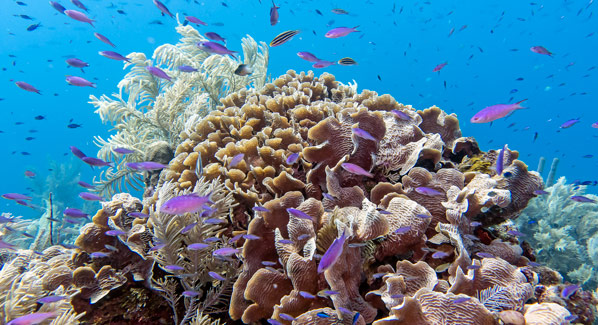
A school of colorful creale fish swarm a formation of thin leaf lettuce coral. This is typical of what snorkelers will discover on the shallow reefs of the Bay Islands. Photo: John A. Anderson/Shutterstock
Guanaja
The easternmost member of the Bay Islands group, Guanaja is also the least developed. Most around-island travel happens by water taxi rather than road, and the primary settlement, Bonica Town, is a community perched on a tiny dollop of land in the center of a lagoon. Shoreside resorts tend to be small family-run affairs, and several of these properties sit beachside, making it possible to wade out and discover patch reefs and schooling fish in the clear waters. A string of small cays on the island’s south side is just a short distance from the edge of underwater cliffs that rise to within 15 feet of the surface. A quick boat ride or a long swim brings snorkelers to these underwater walls, where they can watch reef fish flit across the colorful shallows, or glide out over the edge of the deeper blue abyss to look for passing eagle rays and possibly dolphin. For an escape from the ordinary, head to tiny Half Moon Cay and the intimate resort known as Graham’s Place, which occupies a palm-covered slice of beach, with the barrier reef just a stone’s throw away.
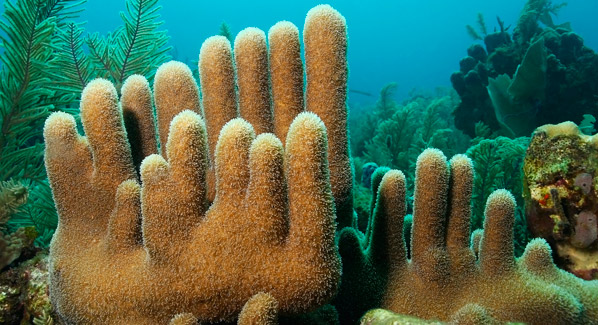
This group of pillar coral, found on a shallow reef in Honduras’ Bay Islands, resembles hands emerging from the sea floor. The fuzzy surfaces are actually coral polyps feeding. Photo: Brian Lasenby/Shutterstock
Roatán
Roatán, the largest of the Bay Islands, has long been a magnet for the backpacking crowd, but it’s also home to several upscale beach resorts. Because the island is almost entirely ringed by coral reefs, finding a suitable snorkel site is mainly a matter of gaining beach access. The easiest place to do so is at West Bay Beach, which as the name suggests, sits at the island’s western tip. The sandy shallows are favorites with turtles, while a 200-foot swim takes you to a coral wall on the edge of the deep. Nearby Half Moon Bay is another popular spot for shore entries and home to beachfront restaurants where you can savor fresh seafood and a cold cerveza afterwards. Sign up for a boat trip and you’ll open up a whole new realm of possibilities, including sites such as the Valley of the Kings, where vertical walls drop hundreds of feet from the reef top, or secluded Pigeon Cay, where groves of elkhorn coral sit just off a white sand beach. Several resorts along the island’s southern coast overlook nearby shallow reefs. One of the best is Fantasy Island Beach Resort, which occupies a small wooded island connected by a causeway, with a private beach delivering great snorkeling and a marina close by for boat trips.
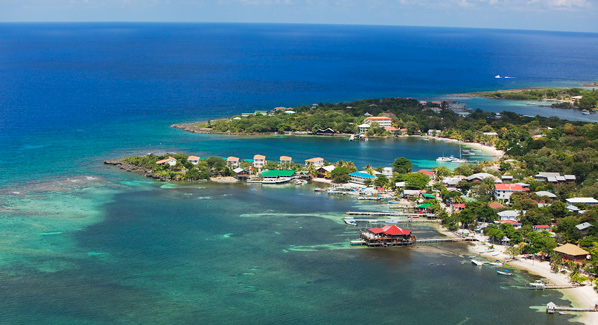
A view of Roatán Island’s Half Moon Bay and West End town. Snorkelers can enter from beach or docks and swim across grass beds to a coral reef at the outer edge of the bay. Photo: Devon Stephens/iStock
Utila
If you’ve found your way to Utila, it’s probably either to drop off the radar or to go scuba diving and snorkeling. If you are staying at one of several resorts along the south shore, you can swim right out from the beach and explore a range of shallow sand flats and patch reefs, or continue a bit farther to the edge of the drop-off. It’s also possible to gain access to prime sites at points along Chepes Beach, or near the Blue Bayou Beach House. If you opt for a boat trip, you can spend a day at idyllic Water Cay or gain access to the north shore, where oceanic fish patrol the underwater walls, and there is the promise, but no guarantee, of meeting up with a whale shark. Encounters with these massive yet harmless behemoths are limited to surface swims, so snorkelers actually have an advantage over scuba divers in these cases. The premier property on the island’s south shore is the Laguna Beach Resort, which is built on an isolated spit of land, with waterfront bungalows overlooking the lagoon and a prime snorkel reef just out front.

